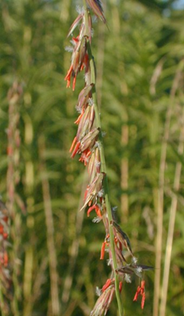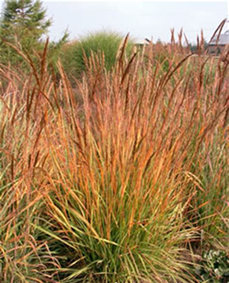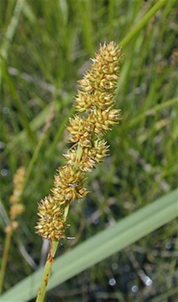OUR COMMITMENT TO CREATION
Prairie Grass - The Foundation of a Prairie, Part 2
Paula Tompkins, Land Stewardship member
As we move into fall, the subtle beauty of prairie grasses becomes more apparent as we walk prairie trails. While the FUMC prairie has 8 main grass species, in the 19th century there were over 150 different species of prairie grasses. Deep roots of these grasses, some over 10 feet, stored carbon in the soil, helping make the Midwest’s prairies the breadbasket of North America in the 20th century.
Carbon is one of the keys to life on earth, a crucial element in the earth’s carefully balanced cycle of life. In the carbon cycle trees, oceans, and prairies absorb carbon and store it to be used later to help plant and animal life grow. Carbon absorption in the earth’s water and soil is called carbon sequestration. In Minnesota our trees, lakes, bogs, and prairie plants absorb carbon from the air. Our native Minnesota landscape plays an important role in the earth’s carbon cycle, helping counteract the current imbalance of carbon in our atmosphere. In restoring FUMC’s prairie, we are helping restore balance to the carbon cycle and the earth’s cycle of life.
Grasses are the prairie plants that absorb the most carbon, because their deep roots store carbon in the ground. Last month this column described the four deep rooted grasses in our prairie—Big Bluestem, Little Bluestem, Switch Grass, and Prairie Drop Seed. This month’s column will describe the remaining four prairie grasses that sequester carbon in the soil while bringing subtle beauty to our prairie—Side Oats Grama, Kalm’s Brome, Indian Grass, and Fox Sedge.

Side Oats Grama is short, only 2-2 1/2 feet tall, but its roots run 2-4 feet deep. Some consider it the only prairie grass that produces true flowers. The orange-red flowers bloom along one side of the grass stem about mid-summer, hanging down and dangling in the wind. The deep roots stabilize soil and help the plants survive drought. Side Oats Grama attracts beneficial insects, including six different species of the skipper butterfly, which then attract birds and other wildlife.
Kalm’s Brome is a versatile grass. It can grow in wetland areas as well as drier prairies. Because the FUMC property is so diverse, ranging from wetlands to mesic or drier prairie, Kalm’s Grome is a useful grass to plant. It reaches a height of 2 feet and is one of the earliest blooming prairie grasses, blooming in early summer.
Kalm’s Grome supports a wide variety of wildlife. Insects and larvae feed on this grass, which attracts birds. Gamebirds, sparrows and small rodents also feed on the fairly large seeds, while rabbits, deer and livestock feed on the foliage.

Indian Grass grows 6-8 feet tall with roots reaching 6 feet. It is another versatile grass that
can grow in wet and dry conditions, although it prefers moist sites. Tiny, yellow to bronze flowers appear in late summer, followed by small grains. Indian grass is an important food source for insects. Several species of grasshopper feed on Indian Grass, providing food for songbirds and upland game birds. The caterpillars of the salt and pepper skipper feed on Indian Grass.
It also provides nesting habitat for several game birds.



